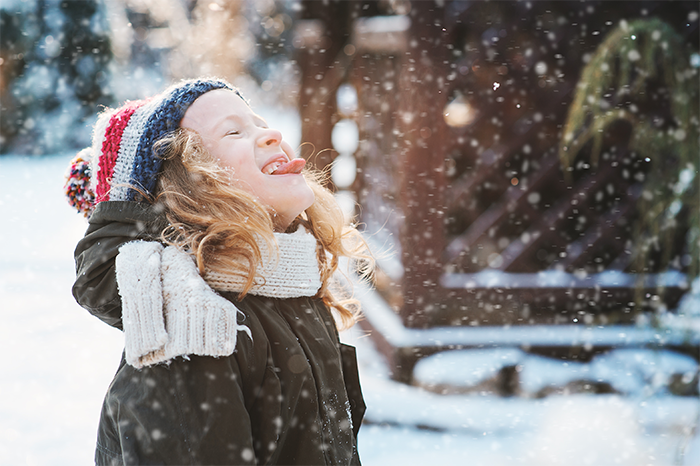The Science of Snow
December 8, 2021
by Lindsey Flannery
Snow is magical. There’s just something about it that gets kids excited -- the sledding, the fort building, the SNOW DAYS! -- not to mention the nostalgia and holiday memories that it conjures for us adults. And when kids and adults alike are excited about something, it creates the perfect opportunity for learning.
So here, we share a simple guide for a snowy science lesson that will have your kids impatiently awaiting the next snowfall. First, we provide a middle school level explanation of the science (which you can pare down for younger children), followed by some hands-on activities!

What is a snowflake?
Is it ice? Well, not exactly -- but it starts as ice. Snowflakes form when an extremely cold water droplet freezes around a speck of dust, creating a tiny ice crystal. As the ice crystal moves through the clouds, water vapor freezes to it, creating a snowflake that eventually becomes heavy enough to fall to the earth.
Why do snowflakes always have six sides?
The short answer? Because that’s how water molecules organize themselves when they freeze.
The science-y answer: Ice has a hexagonal lattice structure. When water freezes, the molecules connect together to form a hexagon. As more molecules are added, they form branches on each of the six sides, creating the crystalline snowflake structure we recognize.
This structure is more apparent in a snowflake than, say, an ice cube, because snowflakes form gradually from freezing water vapor and are open all around, as opposed to the freezing of liquid water to make ice, which is confined to the shape of the container it’s in.
Different kinds of snow
As each snowflake falls, it follows a different path, experiencing a different environment, which is why no two snowflakes are alike. Tiny variations in temperature, air pressure and other factors can influence the shape of a snowflake. The various shapes include prisms, columns, plates, and needles -- all of which still have the hexagonal structure.
If your child is really interested in this, you can research exactly how different temperatures/environments lead to each of the different snowflake shapes. There are plenty of resources online, like this one!
Sometimes, as a snowflake falls, it collides and freezes with other water droplets, a process called riming which creates a little ice pellet called a graupel -- the hard packing snow.
If a snowflake dodges the water droplets, it collides with other snowflakes, which creates an aggregate -- a light, fluffy snow.
Cool facts about snowflakes
- No two snowflakes are alike!
- Every winter in the U.S., 1,000,000,000,000,000,000,000,000 (1 septillion - that’s 24 zeros!) snowflakes fall.
- It can take up to 100,000 water vapor droplets to make each snowflake.
- The smallest snowflakes are as small as the width of a human hair, and are called diamond dust crystals - they appear when it’s very cold.
- The largest snowflake ever was 15 inches long!
Capture your own snowflakes!
It’s easy to observe the delicate beauty of snowflakes all on your own! Simply take a piece of black construction paper outside (put it on top of a piece of cardboard or a book to make it sturdier) and let the paper sit out for about 20 minutes, out of the snow, so it gets cold. (This way, the snowflakes won’t immediately melt when they hit the paper.)
Then, bring the paper into the snow and let a few flakes fall on it. Immediately observe with a magnifying glass before they disappear! Notice the type of snow that’s falling and the differences and similarities between each flake. Do you notice any of the distinctive crystal shapes mentioned above?
Snowflake craft
The opportunities are limitless for crafting your very own snowflakes, but we love the classic paper snowflakes the best. It’s simple to do once kids have the hang of it, and they will happily cut them out by the dozens (and you can help decorate the house, gifts, and tree with their creations!) Plus, they’ll be learning STEM skills like patterns, prediction, and sequencing.
While crafting, reinforce the science you’ve already discussed with questions such as: “What’s the coolest thing you learned about snowflakes?” or “what’s your favorite kind of snow?” Hopefully, you’ll have plenty of opportunities this winter for the very best kind of learning: playing in the snow with your kids!
--------
Sources:
https://www.noaa.gov/stories/how-do-snowflakes-form-science-behind-snow
https://thehomeschoolscientist.com/snowflake-science/
